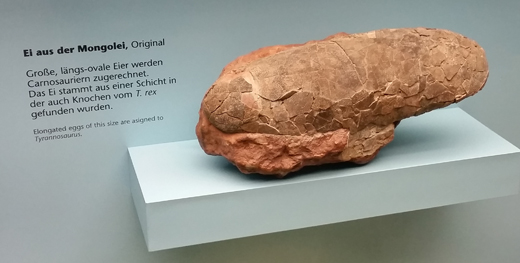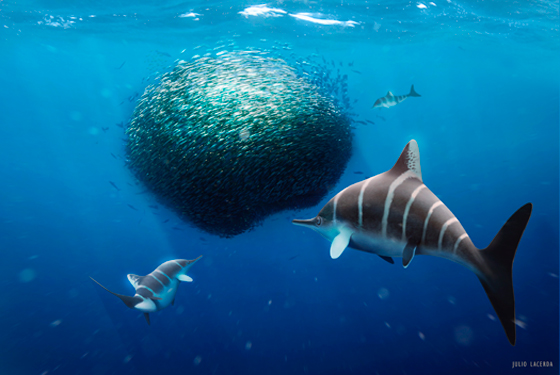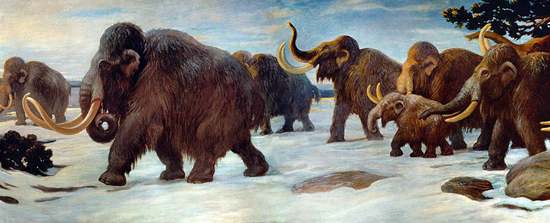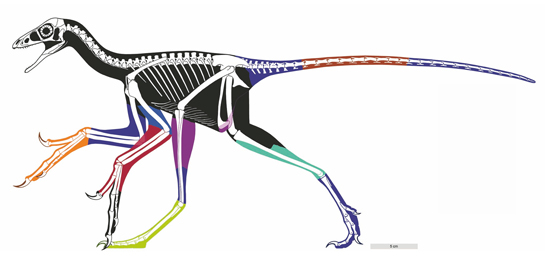Fossilised Eggs Yield Ancient DNA
A team of scientists based at Murdoch University in Perth, Western Australia, have successfully extracted DNA from fossilised eggshells. This breakthrough in ancient DNA extraction may permit researchers to understand the taxonomic relationships between long extinct birds and their modern relatives, as well as helping them to learn more about extinct species.
The research team were able to successfully recover genetic material from the eggs of several different species of extinct birds, the size and thickness of the egg shell did not seem to inhibit the extraction process with DNA being extracted from both thick and thin eggshells. In a study that has been written up in the scientific publication “The Proceedings of the Royal Society B (Biology)”; a number of fossilised eggs from Australia, New Zealand and Madagascar were analysed and DNA successfully extracted from the internal membranes of the eggshell.
The study also demonstrated that by using eggshell, accurate radiocarbon dating of specimens could be carried out and an insight gained as to the environmental conditions prevalent at the time the eggs were laid.
A Dinosaur Egg (Theropod)
Picture credit: Everything Dinosaur
The oldest egg from which genetic material was extracted was a 19,000 year old emu egg. Other bird species whose eggshells were analysed include the Giant Moa of New Zealand and the Elephant Bird – Aepyornis from Madagascar. Although a number of media sources have claimed this breakthrough as an important step towards extracting DNA from dinosaur eggs, the creation of a real life Jurassic Park is still a very long way off.
Commenting on the research work, lead author Charlotte Oskam of Murdoch University’s DNA laboratory stated:
We were able to obtain DNA from both thin (duck) and thick (elephant bird) eggshells, which suggests that thickness may not play a significant role in the recovery of DNA from eggshells. Furthermore, we were able to isolate DNA from eggshells from three countries, each with very different climate conditions.”
Fossilised Eggshells
Eggshells are resistant to biological and organic breakdown, as anyone who has ever put eggshells on a compost heap will tell you, The calcium carbonate and other compounds from which eggshell is made, breaks down very slowly. The structure deters decay and it is this property that has helped preserve genetic material in as yet not fully permineralised fossils.
Oskam explained:
“that moa eggshell has 125 times lower microbial contamination when compared to moa bone. This highlights eggshells as an attractive substrate for ancient DNA work, especially whole genome studies.”
Although she is against reviving extinct animals, regarding it as unethical, this new technique could help preserve the genetic material of endangered egg-laying animals that are around today. The gathered genetic information from these ancient birds, might provide better evolutionary histories for extinct species. It could also enable researchers to non-invasively investigate the past biodiversity of many birds, including modern ones, like penguins.
It is thought that eggs laid at higher latitudes such as the Arctic or in Antarctica may have a greater preservation potential and thus yield more genetic material.
Commenting on the possibility of extracting DNA from long permineralised dinosaur eggs, Oskam added:
“It would be extremely exciting to extract DNA from a dinosaur egg,”
However, since even the most recent dinosaur egg fossils (Late Cretaceous) are something like 3,500 times older than the oldest fossil egg from which DNA was extracted in this study, the scientists admit that they are a long way from being able to gather DNA from dinosaur eggs.
A spokesperson for the researchers said:
“Since the last dinosaurs died out 65 million years ago, it is safe to say we are nowhere near approaching these sorts of ages.”
The results of the analysis of this palaeogenetic data will help the team interpret the relationship between many of these ancient bird species and how they fared once modern humans interacted with them. The information produced may provide further compelling evidence of the role of man in the extinction of these species of birds, many of whom where flightless and vulnerable to hunting pressure.
Visit Everything Dinosaur’s award-winning website: Everything Dinosaur.







If DNA can be extracted from the calcium shell of an egg then why is extracting DNA from a bone so difficult. Of course DNA breaks down in water and Dinosaurs being dead and subjected to of course rainstorms makes any DNA in bone structures almost impossible. But wouldn’t the solidifying nature of bones contain and fossilize the dna structure within it? Of course the structure is very long but if collected enough fragments to overlap couldn’t we produce a full structure?
I’d imagine there are no duplicate sequences in a single DNA structure, is there? I’m no biologist and I know almost nothing about how to extract DNA nor what their structure is.
Imagine the value of Pi (of course unlimited length) but for a fraction of a second imagine it is of finite length and it is just as long as a dinosaur DNA structure. Then imagine it is broken up into 15 bit long pieces. Could we piece it back together? That would be a lot of pieces we would need to construct our Dino DNA. The day we could do that would be a day as momentous to biologists as the day the atom bomb was developed to physicists.
Hi Mike, where is that replica of the Moa from? I can’t seem to find it anywhere on the net.
Thank you for your comment,
As far as we know a number of Moa models have been found for museums but these have been bespoke commissions. We are not aware of any off-the-shelf models of Moas.
Sorry.